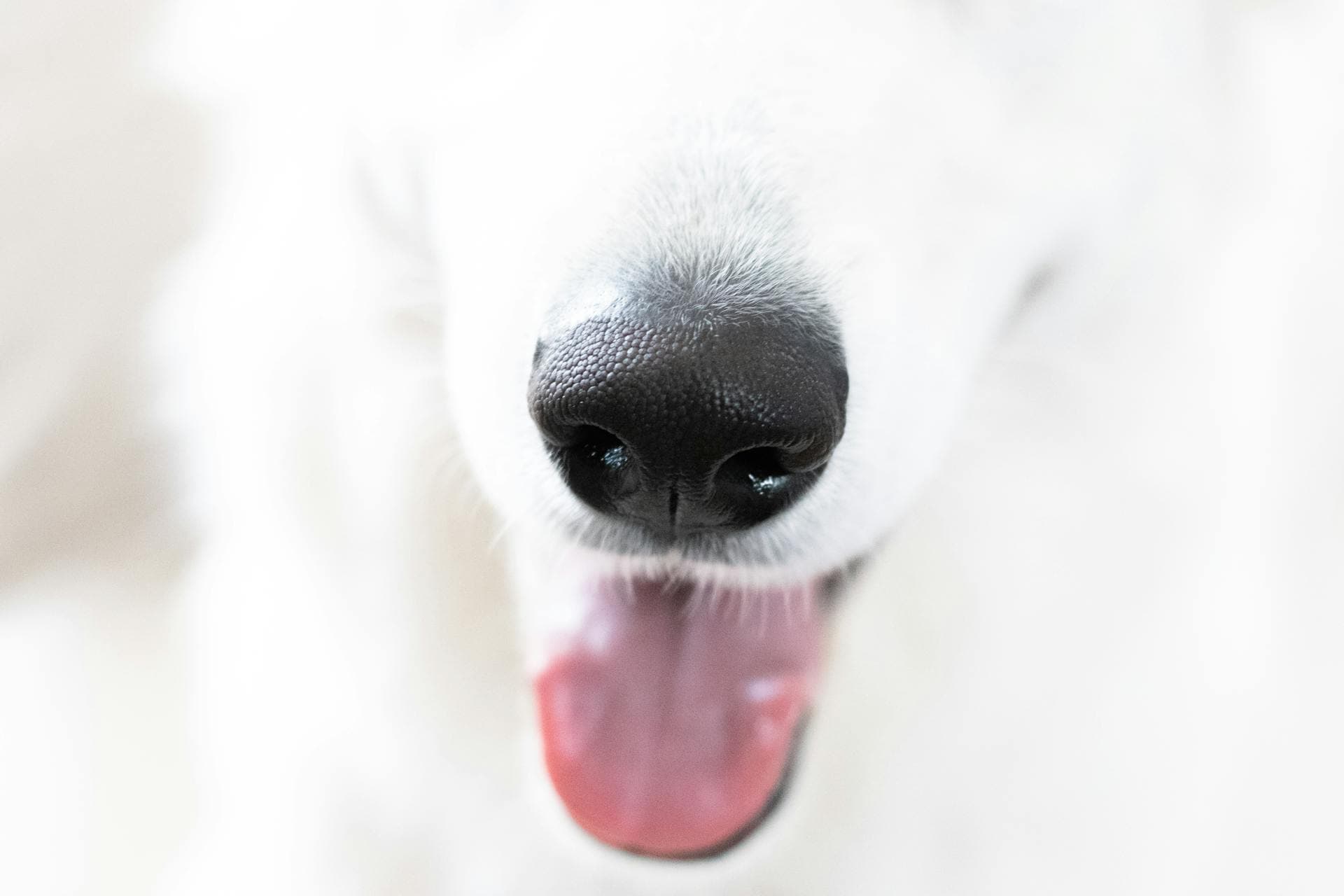A dog’s nose works hard every day. They sniff out treats and explore the world. And according to VCA Animal Hospitals, their noses house around 100 million sensory receptors. A human nose has merely 6 million. What happens when something doesn’t seem quite right? Are you thinking “My dog’s nose is dry and looks strange”? There are many ways to keep your dog’s nose in top shape. All dog owners should know what to do when problems arise.
Signs of a Healthy vs. Unhealthy Nose
A healthy nose tells you a lot about your dog. It will be cool, moist and smooth. Your dog’s nose might feel warm from time to time. This is especially true after napping and is normal. Persistent warmth or dryness might say that something's off. The best pet guardian’s motto: “When my dog’s nose is dry, I always keep an eye on it.” Look out for any cracking or flaking. A little dryness once in a while is okay. On the other hand, a cracked and dry nose could point to bigger issues. Constantly hot or warm nose for long periods can raise concerns. When a dog’s nose is hot and the pet seems out of sorts, you may need to consult a vet.
Daily Nose Care Tips
Caring for your dog’s nose is not complicated at all. Simple and consistent habits can make a huge difference.
Hydration. A well-hydrated dog will have fewer issues with a dry nose. Make sure they have access to fresh water at all times.
Moisturize. Apply a gentle and pet-safe balm when your dog’s nose is dry and warm. A small amount is all that’s needed to help keep it soft.
Watch for cracks. Carefully inspect their nose. Do it regularly. Any cracks, bumps or scabs should not be ignored. Early detection may prevent bigger problems.
Seasonal Nose Care for Dogs
Different seasons bring different challenges. Cold winter air can dry out their noses very quickly. Use a balm during the cold months to protect against cracks. During summer, their nose might dry out from heat. Access to shade and plenty of water is essential. Check their nose for any changes and take action immediately.
How to Treat a Dry or Cracked Dog Nose
Dry, cracked, or flaky nose can happen due to any reason. The treatment also depends on the cause. You can use a pet-safe moisturizer. A nose balm or coconut oil is perfect. Apply it gently. Also make sure that your dog doesn’t lick it all off right away. Distract them with a treat or a favorite toy. This will keep their focus away from their nose.
Recurring dryness or dry nose getting worse means time to check with your vet. Dogs and dry noses sometimes need extra care. The vet might recommend additional treatments that can ease the pain.
Addressing Other Common Nose Problems
Dogs can experience a variety of nose issues. Some might be small annoyances. Others could signal bigger problems. The more you understand about these issues, the easier it is to deal with them.
Nasal Infections and Inflammations
Do not, for a moment, think that a runny nose is harmless. Nasal infections are pretty common in dogs.
A continuously dripping nose in dogs, combined with yellow or green drainage, indicates a potential infection. Antibiotics recommended by vets are the only effective treatment in this situation. PetMD states that bacterial infections or mites are typically the primary causes of nasal infections in dogs.
Allergies and How They Affect the Nose
Dogs can develop allergies. These can be due to various things. Dust, pollen and certain foods are common. Sneezing frequently or a red, swollen nose, means allergies. Your dog covering nose using the paw is a very common picture in these situations. Talk to your veterinarian about allergy testing or treatments to help alleviate their discomfort.
Nasal Hyperkeratosis: What It Is and How to Treat It
Have you ever noticed thick, crusty skin forming on your dog’s nose? That could be dog nose hyperkeratosis, a condition where the skin builds up too much keratin. It doesn’t usually cause pain, but it can make their nose less sensitive. A gentle exfoliation can be a good idea. Follow up with a moisturizing balm. This will help manage the condition. The best course of action should always be decided by a vet.
Color Changes: What Do They Indicate?
Nose color changes can be alarming. Don’t panic when your dog’s normally black nose turns pink or white. It could be a condition called snow nose. The condition basically involves lightening of the nose pigment during colder months. Color changes can also be because of aging or an illness. Keep an eye on it. The presence of other symptoms with the color shift means you need medical advice.
Conclusion
Your dog’s nose tells a lot about their health. With a little daily attention, your dog’s nose can be in top health. A hydrated and moisturized nose helps your dog stay comfortable. They will be more than ready to sniff out their next adventure. Catch problems early and use a bit of extra care during extreme weather. These minor steps will let you keep your dog’s nose in great shape year-round.



